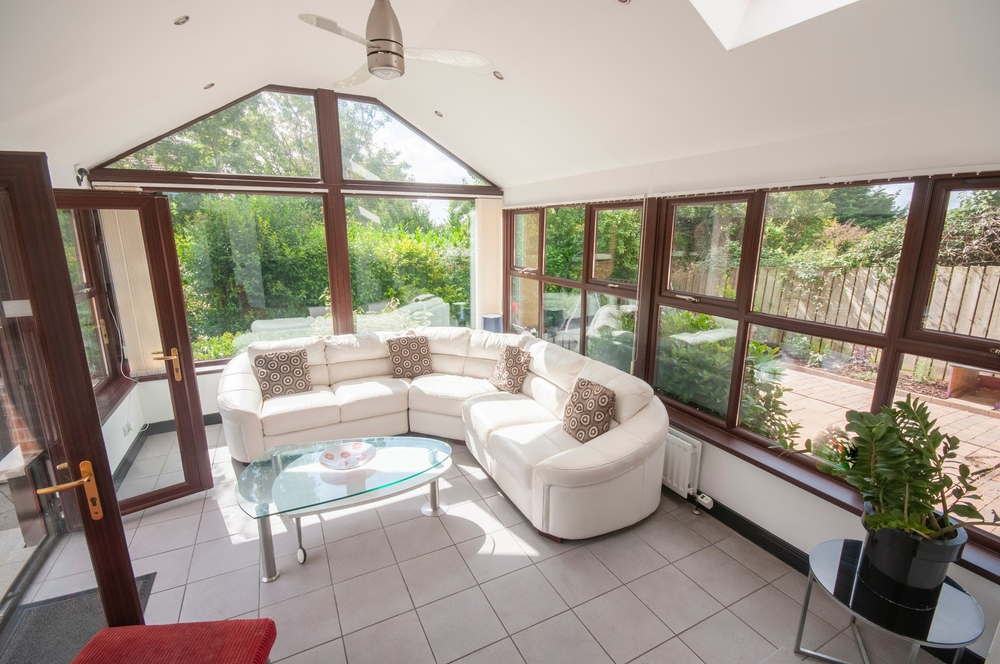
3 Types of Premium Sunrooms to Consider for Your Ridge, NY Home
Provider of Premium Sunrooms, Addition Solutions, Pergolas, LifeRoom, LifeRoom Louvered Systems, and more for all residents in Nassau County!
Get a free estimate
Awards
With our many years of experience we have earned many home remodeling awards we take pride in.




Client Testimonials
striving for great experiences

Read More
I had an exceptional experience with Four Seasons Sunrooms. They were customer satisfaction oriented and their prices were by far the most reasonable. They came out to assess my needs right away, and I had received great design advice and prompt appointments.

Read More
They are professional and friendly people who took the time to explain how the steps leading up to the completion of the sunroom and kept up with communication along the way. I would highly recommend them to any of my friends and family!

Read More
We love our new sunroom! Four Seasons worked with us to get all the necessary permits and town hearings to move forward. The workers were hard working and courteous, in very cold weather! We are enjoying our new beautiful living space.

Read More
Their products are beautiful, plus there's so many sunroom styles to choose from. I'm really impressed by the impeccable work they've done. In addition, their staff members are super friendly!
Previous
Next
Outdoor Beauty to Enjoy Year-round!
Four Seasons Sunroom, the preeminent Ridge, NY all season sunroom designer, has been transforming the homes of Suffolk County for nearly 50 years. Backed by half a century of experience designing and installing the finest premium sunrooms, we have established ourselves as a tried and true, and the most dependable and highly recommended internationally recognized leader in the industry. Our team of professionally trained and highly experienced Ridge, NY all season sunroom designers are committed to creating beautiful spaces that amaze our clients, and we would love to do the same for you. To find out how you can create a stunning private sanctuary in your Suffolk County home, contact Four Seasons Sunroom today!
3 Types of Premium Sunrooms to Consider for Your Ridge, NY Home
If you’re a homeowner and you’re just starting to explore premium sunroom ideas, one of the first things that you’re going to want to figure out is which type of sunroom would be the best fit for your Suffolk County home and your lifestyle.
A sunroom is defined as a fully enclosed room that is attached to a house and features walls of windows. It’s accessed via a door on the interior of the home, and it may also feature an exterior door that provides access to the outdoors. Beyond this basic definition, sunrooms vary widely in regard to design and style. For instance, some premium sunrooms are made for year-round use, while others are only intended to be used during warmer weather. So, which type of sunroom is the right choice for your Suffolk County home? Read on to discover some of the different options that a reputable Ridge, NY all season sunroom designer will be able to create for you.
A Conservatory Sunroom
If you want to add old-world charm to your Suffolk County home, a conservatory-style sunroom is definitely an option you should consider. It is the quintessential premium sunroom, and it’s the first type that often comes to mind when many people envision a sunroom. The panels and roof of a conservatory are usually comprised of glass or polycarbonate material, allowing you to enjoy unobstructed views of the natural beauty that surrounds your property, including the sky.
A Four Season Room
If you’d like to add an additional living space to your Suffolk County home that you and your family can enjoy all year long, a faour season-style premium sunroom would be an excellent option for you. Ridge, NY all season sunroom designers manufacture these rooms with thermal breaks, which are placed throughout the structure, as well as double-pane, high-performance, insulated glass windows, which help the room remain comfortable year-round and make heating and cooling the space more cost-effective. Like a solarium, a four season premium sunroom is attached to the house, features an internal door that provides access from inside your home, and can also feature an exterior door that leads to the outdoors.
A Three Season Room
If your goal is to enjoy the beauty of the outdoors from the comfort of your own Suffolk County, but you don’t really need or want a year-round living space, a three season room may be the ideal premium sunroom for you and your family. As the name suggests, three season rooms can be used for three seasons: spring, summer, and fall. Like a four season sunroom, this option also features walls of windows; however, they aren’t as weather-resistant as a four season sunroom, and as such, they aren’t designed to withstand cold temperatures, so they do get chilly in the winter. Nonetheless, this type of premium sunroom will certainly add more living space to your Suffolk County house; plus, it may be a more affordable option than a solarium or a four season sunroom.


Contact Four Seasons Sunroom, the Premier Ridge, NY All Season Sunroom Designer
Four Seasons Sunroom is a highly regarded designer and installer of all season sunrooms in Ridge, NY. Our team of experienced and talented professionals is committed to helping our clients get more joy out of their homes, and we would love to assist you with creating your very own private sanctuary in your Suffolk County home. For more information and to schedule a consultation, call 516-253-2329 today!
Call Us Today!!
In 1693, William “Tangier” Smith, who owned a homestead in Setauket, was allowed to purchase a large tract of land on the South Shore of Long Island in recognition of his being mayor of Tangier in Africa. The land, called Manor St. George, stretched from the Carmans River (then called the Connecticut River) in the west to the edge of the town of Southampton in the east, with a northern border around present-day New York State Route 25, as much as 81,000 acres (330 km2) of land. He made his manor seat on the South Shore in present-day Mastic, and the northern part, now the south side of Ridge, was called “The Swamp” or “Longswamp”. A house wasn’t built at Longswamp until after the American Revolution. In 1817, William Sydney Smith inhabited the house and changed the name to Longwood.
In 1955, what then remained of William Smith’s original manor was primarily located in Ridge and was surrounded by the world growing up around it, in the form of the Brookhaven National Laboratory and the surrounding areas becoming increasingly populated. Longwood’s 750 acres (300 ha) fell into the hands of Elbert Clayton Smith, who immediately moved his family from California to live there. He seems to have been very generous to his new community; his donations included 51 acres (21 ha) to the school board for the construction of Longwood High School and 6 acres (2.4 ha) to Middle Island Presbyterian Church. In 1967, Elbert Smith died, and the Longwood Estate was carved into housing developments and nearly destroyed until enough noise was made about preservation to have the house and 35 acres (14 ha) of land given to the Town of Brookhaven in 1974. The Smith Estate was added to the National Register of Historic Places in 1981.
In 1738, northern Ridge was settled by widower Samuel Randall of North Stonington, Connecticut; his only son Stephen Randall and his descendants farmed a 4,000-acre (1,600 ha) plot of ground that Samuel had always referred to as “the Ridge” based on the geographical terrain. First called “Randallville”, Ridge was the name selected by its residents for postal delivery. The Randall burial plot near the William Floyd Parkway includes the grave of Lt. Stephen Randall (1736-1818), patriot of the American Revolution and a Suffolk County Militia veteran of the Battle of Long Island. Graves of Randall’s wife Elizabeth Swezey (1747-1834) and several descendants are also within the plot.
Learn more about Ridge.Additional Links
Here are some general contractor-related links:
Albertson
Atlantic Beach
Baldwin
Baldwin Harbor
Barnum Island
Baxter Estates
Bay Park
Bayville
Bellerose
Bellerose Terrace
Bellmore
Bethpage
Brookville
Carle Place
Cedarhurst
Centre Island
Cove Neck
East Atlantic Beach
East Garden City
East Hills
East Massapequa
East Meadow
East Norwich
East Rockaway
East Williston
Elmont
Farmingdale
Floral Park
Flower Hill
Franklin Square
Freeport
Garden City
Garden City Park
Garden City South
Glen Cove
Glen Head
Glenwood Landing
Great Neck
Great Neck Estates
Great Neck Gardens
Great Neck Plaza
Greenvale
Harbor Hills
Harbor Isle
Hempstead
Herricks
Hewlett
Hewlett Bay Park
Hewlett Harbor
Hewlett Neck
Hicksville
Inwood
Island Park
Jericho
Kensington
Kings Point
Lake Success
Lakeview
Lattingtown
Laurel Hollow
Lawrence
Levittown
Lido Beach
Locust Valley
Long Beach
Lynbrook
Malverne
Malverne Park Oaks
Manhasset
Manhasset Hills
Manorhaven
Massapequa
Massapequa Park
Matinecock
Merrick
Mill Neck
Mineola
Munsey Park
Muttontown
New Cassel
New Hyde Park
North Bellmore
North Hempstead
North Hills
North Lynbrook
North Massapequa
North Merrick
North New Hyde Park
North Valley Stream
North Wantagh
Oceanside
Old Bethpage
Old Brookville
Old Westbury
Oyster Bay
Oyster Bay Cove
Plainedge
Plainview
Plandome
Plandome Heights
Plandome Manor
Point Lookout
Port Washington
Port Washington North
Rockville Centre
Roosevelt
Roslyn
Roslyn Estates
Roslyn Harbor
Roslyn Heights
Russell Gardens
Saddle Rock
Saddle Rock Estates
Salisbury
Sands Point
Sea Cliff
Seaford
Searingtown
South Farmingdale
South Floral Park
South Hempstead
South Valley Stream
Stewart Manor
Syosset
Thomaston
Uniondale
University Gardens
Upper Brookville
Valley Stream
Wantagh
West Hempstead
Westbury
Williston Park
Woodbury
Woodmere
Woodsburgh
Amagansett
Amityville
Aquebogue
Asharoken
Babylon
Baiting Hollow
Bay Shore
Bay Wood
Bayport
Belle Terre
Bellport
Blue Point
Bohemia
Brentwood
Bridgehampton
Brightwaters
Brookhaven
Calverton
Center Moriches
Centereach
Centerport
Central Islip
Cold Spring Harbor
Commack
Copiague
Coram
Cutchogue
Deer Park
Dix Hills
East Farmingdale
East Hampton
East Hampton North
East Islip
East Marion
East Moriches
East Northport
East Patchogue
East Quogue
East Setauket
East Shoreham
Eastport
Eatons Neck
Elwood
Farmingville
Fire Island
Flanders
Fort Salonga
Gilgo
Gordon Heights
Great River
Greenlawn
Greenport
Halesite
Hampton Bays
Hauppauge
Head of the Harbor
Holbrook
Holtsville
Huntington
Huntington Bay
Huntington Station
Islandia
Islip
Islip Terrace
Jamesport
Kings Park
Lake Grove
Lake Ronkonkoma
Laurel
Lindenhurst
Lloyd Harbor
Manorville
Mastic
Mastic Beach
Mattituck
Medford
Melville
Middle Island
Miller Place
Montauk
Moriches
Mount Sinai
Napeague
Nesconset
New Suffolk
Nissequogue
North Amityville
North Babylon
North Bay Shore
North Bellport
North Great River
North Haven
North Lindenhurst
North Patchogue
North Sea
Northampton
Northport
Northville
Northwest Harbor
Noyack
Oak Beach
Oakdale
Ocean Beach
Old Field
Orient
Patchogue
Peconic
Poquott
Port Jefferson
Port Jefferson Station
Quiogue
Quogue
Remsenburg
Ridge
Riverhead
Riverside
Rocky Point
Ronkonkoma
Sag Harbor
Sagaponack
Sayville
Selden
Setauket
Shelter Island
Shirley
Shoreham
Smithtown
Sound Beach
South Huntington
Southampton
Southold
Speonk
Springs
St. James
Stony Brook
Stony Brook University
Terryville
Tuckahoe
Village of the Branch
Wading River
Wainscott
Water Mill
West Babylon
West Bay Shore
West Hills
West Islip
West Sayville
Westhampton
Westhampton Beach
Wheatley Heights
Wyandanch
Yaphank
Albertson
Atlantic Beach
Baldwin
Baldwin Harbor
Barnum Island
Baxter Estates
Bay Park
Bayville
Bellerose
Bellerose Terrace
Bellmore
Bethpage
Brookville
Carle Place
Cedarhurst
Centre Island
Cove Neck
East Atlantic Beach
East Garden City
East Hills
East Massapequa
East Meadow
East Norwich
East Rockaway
East Williston
Elmont
Farmingdale
Floral Park
Flower Hill
Franklin Square
Freeport
Garden City
Garden City Park
Garden City South
Glen Cove
Glen Head
Glenwood Landing
Great Neck
Great Neck Estates
Great Neck Gardens
Great Neck Plaza
Greenvale
Harbor Hills
Harbor Isle
Hempstead
Herricks
Hewlett
Hewlett Bay Park
Hewlett Harbor
Hewlett Neck
Hicksville
Inwood
Island Park
Jericho
Kensington
Kings Point
Lake Success
Lakeview
Lattingtown
Laurel Hollow
Lawrence
Levittown
Lido Beach
Locust Valley
Long Beach
Lynbrook
Malverne
Malverne Park Oaks
Manhasset
Manhasset Hills
Manorhaven
Massapequa
Massapequa Park
Matinecock
Merrick
Mill Neck
Mineola
Munsey Park
Muttontown
New Cassel
New Hyde Park
North Bellmore
North Hempstead
North Hills
North Lynbrook
North Massapequa
North Merrick
North New Hyde Park
North Valley Stream
North Wantagh
Oceanside
Old Bethpage
Old Brookville
Old Westbury
Oyster Bay
Oyster Bay Cove
Plainedge
Plainview
Plandome
Plandome Heights
Plandome Manor
Point Lookout
Port Washington
Port Washington North
Rockville Centre
Roosevelt
Roslyn
Roslyn Estates
Roslyn Harbor
Roslyn Heights
Russell Gardens
Saddle Rock
Saddle Rock Estates
Salisbury
Sands Point
Sea Cliff
Seaford
Searingtown
South Farmingdale
South Floral Park
South Hempstead
South Valley Stream
Stewart Manor
Syosset
Thomaston
Uniondale
University Gardens
Upper Brookville
Valley Stream
Wantagh
West Hempstead
Westbury
Williston Park
Woodbury
Woodmere
Woodsburgh
Amagansett
Amityville
Aquebogue
Asharoken
Babylon
Baiting Hollow
Bay Shore
Bay Wood
Bayport
Belle Terre
Bellport
Blue Point
Bohemia
Brentwood
Bridgehampton
Brightwaters
Brookhaven
Calverton
Center Moriches
Centereach
Centerport
Central Islip
Cold Spring Harbor
Commack
Copiague
Coram
Cutchogue
Deer Park
Dix Hills
East Farmingdale
East Hampton
East Hampton North
East Islip
East Marion
East Moriches
East Northport
East Patchogue
East Quogue
East Setauket
East Shoreham
Eastport
Eatons Neck
Elwood
Farmingville
Fire Island
Flanders
Fort Salonga
Gilgo
Gordon Heights
Great River
Greenlawn
Greenport
Halesite
Hampton Bays
Hauppauge
Head of the Harbor
Holbrook
Holtsville
Huntington
Huntington Bay
Huntington Station
Islandia
Islip
Islip Terrace
Jamesport
Kings Park
Lake Grove
Lake Ronkonkoma
Laurel
Lindenhurst
Lloyd Harbor
Manorville
Mastic
Mastic Beach
Mattituck
Medford
Melville
Middle Island
Miller Place
Montauk
Moriches
Mount Sinai
Napeague
Nesconset
New Suffolk
Nissequogue
North Amityville
North Babylon
North Bay Shore
North Bellport
North Great River
North Haven
North Lindenhurst
North Patchogue
North Sea
Northampton
Northport
Northville
Northwest Harbor
Noyack
Oak Beach
Oakdale
Ocean Beach
Old Field
Orient
Patchogue
Peconic
Poquott
Port Jefferson
Port Jefferson Station
Quiogue
Quogue
Remsenburg
Ridge
Riverhead
Riverside
Rocky Point
Ronkonkoma
Sag Harbor
Sagaponack
Sayville
Selden
Setauket
Shelter Island
Shirley
Shoreham
Smithtown
Sound Beach
South Huntington
Southampton
Southold
Speonk
Springs
St. James
Stony Brook
Stony Brook University
Terryville
Tuckahoe
Village of the Branch
Wading River
Wainscott
Water Mill
West Babylon
West Bay Shore
West Hills
West Islip
West Sayville
Westhampton
Westhampton Beach
Wheatley Heights
Wyandanch
Yaphank
Albertson
Atlantic Beach
Baldwin
Baldwin Harbor
Barnum Island
Baxter Estates
Bay Park
Bayville
Bellerose
Bellerose Terrace
Bellmore
Bethpage
Brookville
Carle Place
Cedarhurst
Centre Island
Cove Neck
East Atlantic Beach
East Garden City
East Hills
East Massapequa
East Meadow
East Norwich
East Rockaway
East Williston
Elmont
Farmingdale
Floral Park
Flower Hill
Franklin Square
Freeport
Garden City
Garden City Park
Garden City South
Glen Cove
Glen Head
Glenwood Landing
Great Neck
Great Neck Estates
Great Neck Gardens
Great Neck Plaza
Greenvale
Harbor Hills
Harbor Isle
Hempstead
Herricks
Hewlett
Hewlett Bay Park
Hewlett Harbor
Hewlett Neck
Hicksville
Inwood
Island Park
Jericho
Kensington
Kings Point
Lake Success
Lakeview
Lattingtown
Laurel Hollow
Lawrence
Levittown
Lido Beach
Locust Valley
Long Beach
Lynbrook
Malverne
Malverne Park Oaks
Manhasset
Manhasset Hills
Manorhaven
Massapequa
Massapequa Park
Matinecock
Merrick
Mill Neck
Mineola
Munsey Park
Muttontown
New Cassel
New Hyde Park
North Bellmore
North Hempstead
North Hills
North Lynbrook
North Massapequa
North Merrick
North New Hyde Park
North Valley Stream
North Wantagh
Oceanside
Old Bethpage
Old Brookville
Old Westbury
Oyster Bay
Oyster Bay Cove
Plainedge
Plainview
Plandome
Plandome Heights
Plandome Manor
Point Lookout
Port Washington
Port Washington North
Rockville Centre
Roosevelt
Roslyn
Roslyn Estates
Roslyn Harbor
Roslyn Heights
Russell Gardens
Saddle Rock
Saddle Rock Estates
Salisbury
Sands Point
Sea Cliff
Seaford
Searingtown
South Farmingdale
South Floral Park
South Hempstead
South Valley Stream
Stewart Manor
Syosset
Thomaston
Uniondale
University Gardens
Upper Brookville
Valley Stream
Wantagh
West Hempstead
Westbury
Williston Park
Woodbury
Woodmere
Woodsburgh
Amagansett
Amityville
Aquebogue
Asharoken
Babylon
Baiting Hollow
Bay Shore
Bay Wood
Bayport
Belle Terre
Bellport
Blue Point
Bohemia
Brentwood
Bridgehampton
Brightwaters
Brookhaven
Calverton
Center Moriches
Centereach
Centerport
Central Islip
Cold Spring Harbor
Commack
Copiague
Coram
Cutchogue
Deer Park
Dix Hills
East Farmingdale
East Hampton
East Hampton North
East Islip
East Marion
East Moriches
East Northport
East Patchogue
East Quogue
East Setauket
East Shoreham
Eastport
Eatons Neck
Elwood
Farmingville
Fire Island
Flanders
Fort Salonga
Gilgo
Gordon Heights
Great River
Greenlawn
Greenport
Halesite
Hampton Bays
Hauppauge
Head of the Harbor
Holbrook
Holtsville
Huntington
Huntington Bay
Huntington Station
Islandia
Islip
Islip Terrace
Jamesport
Kings Park
Lake Grove
Lake Ronkonkoma
Laurel
Lindenhurst
Lloyd Harbor
Manorville
Mastic
Mastic Beach
Mattituck
Medford
Melville
Middle Island
Miller Place
Montauk
Moriches
Mount Sinai
Napeague
Nesconset
New Suffolk
Nissequogue
North Amityville
North Babylon
North Bay Shore
North Bellport
North Great River
North Haven
North Lindenhurst
North Patchogue
North Sea
Northampton
Northport
Northville
Northwest Harbor
Noyack
Oak Beach
Oakdale
Ocean Beach
Old Field
Orient
Patchogue
Peconic
Poquott
Port Jefferson
Port Jefferson Station
Quiogue
Quogue
Remsenburg
Ridge
Riverhead
Riverside
Rocky Point
Ronkonkoma
Sag Harbor
Sagaponack
Sayville
Selden
Setauket
Shelter Island
Shirley
Shoreham
Smithtown
Sound Beach
South Huntington
Southampton
Southold
Speonk
Springs
St. James
Stony Brook
Stony Brook University
Terryville
Tuckahoe
Village of the Branch
Wading River
Wainscott
Water Mill
West Babylon
West Bay Shore
West Hills
West Islip
West Sayville
Westhampton
Westhampton Beach
Wheatley Heights
Wyandanch
Yaphank
Albertson
Atlantic Beach
Baldwin
Baldwin Harbor
Barnum Island
Baxter Estates
Bay Park
Bayville
Bellerose
Bellerose Terrace
Bellmore
Bethpage
Brookville
Carle Place
Cedarhurst
Centre Island
Cove Neck
East Atlantic Beach
East Garden City
East Hills
East Massapequa
East Meadow
East Norwich
East Rockaway
East Williston
Elmont
Farmingdale
Floral Park
Flower Hill
Franklin Square
Freeport
Garden City
Garden City Park
Garden City South
Glen Cove
Glen Head
Glenwood Landing
Great Neck
Great Neck Estates
Great Neck Gardens
Great Neck Plaza
Greenvale
Harbor Hills
Harbor Isle
Hempstead
Herricks
Hewlett
Hewlett Bay Park
Hewlett Harbor
Hewlett Neck
Hicksville
Inwood
Island Park
Jericho
Kensington
Kings Point
Lake Success
Lakeview
Lattingtown
Laurel Hollow
Lawrence
Levittown
Lido Beach
Locust Valley
Long Beach
Lynbrook
Malverne
Malverne Park Oaks
Manhasset
Manhasset Hills
Manorhaven
Massapequa
Massapequa Park
Matinecock
Merrick
Mill Neck
Mineola
Munsey Park
Muttontown
New Cassel
New Hyde Park
North Bellmore
North Hempstead
North Hills
North Lynbrook
North Massapequa
North Merrick
North New Hyde Park
North Valley Stream
North Wantagh
Oceanside
Old Bethpage
Old Brookville
Old Westbury
Oyster Bay
Oyster Bay Cove
Plainedge
Plainview
Plandome
Plandome Heights
Plandome Manor
Point Lookout
Port Washington
Port Washington North
Rockville Centre
Roosevelt
Roslyn
Roslyn Estates
Roslyn Harbor
Roslyn Heights
Russell Gardens
Saddle Rock
Saddle Rock Estates
Salisbury
Sands Point
Sea Cliff
Seaford
Searingtown
South Farmingdale
South Floral Park
South Hempstead
South Valley Stream
Stewart Manor
Syosset
Thomaston
Uniondale
University Gardens
Upper Brookville
Valley Stream
Wantagh
West Hempstead
Westbury
Williston Park
Woodbury
Woodmere
Woodsburgh
Amagansett
Amityville
Aquebogue
Asharoken
Babylon
Baiting Hollow
Bay Shore
Bay Wood
Bayport
Belle Terre
Bellport
Blue Point
Bohemia
Brentwood
Bridgehampton
Brightwaters
Brookhaven
Calverton
Center Moriches
Centereach
Centerport
Central Islip
Cold Spring Harbor
Commack
Copiague
Coram
Cutchogue
Deer Park
Dix Hills
East Farmingdale
East Hampton
East Hampton North
East Islip
East Marion
East Moriches
East Northport
East Patchogue
East Quogue
East Setauket
East Shoreham
Eastport
Eatons Neck
Elwood
Farmingville
Fire Island
Flanders
Fort Salonga
Gilgo
Gordon Heights
Great River
Greenlawn
Greenport
Halesite
Hampton Bays
Hauppauge
Head of the Harbor
Holbrook
Holtsville
Huntington
Huntington Bay
Huntington Station
Islandia
Islip
Islip Terrace
Jamesport
Kings Park
Lake Grove
Lake Ronkonkoma
Laurel
Lindenhurst
Lloyd Harbor
Manorville
Mastic
Mastic Beach
Mattituck
Medford
Melville
Middle Island
Miller Place
Montauk
Moriches
Mount Sinai
Napeague
Nesconset
New Suffolk
Nissequogue
North Amityville
North Babylon
North Bay Shore
North Bellport
North Great River
North Haven
North Lindenhurst
North Patchogue
North Sea
Northampton
Northport
Northville
Northwest Harbor
Noyack
Oak Beach
Oakdale
Ocean Beach
Old Field
Orient
Patchogue
Peconic
Poquott
Port Jefferson
Port Jefferson Station
Quiogue
Quogue
Remsenburg
Ridge
Riverhead
Riverside
Rocky Point
Ronkonkoma
Sag Harbor
Sagaponack
Sayville
Selden
Setauket
Shelter Island
Shirley
Shoreham
Smithtown
Sound Beach
South Huntington
Southampton
Southold
Speonk
Springs
St. James
Stony Brook
Stony Brook University
Terryville
Tuckahoe
Village of the Branch
Wading River
Wainscott
Water Mill
West Babylon
West Bay Shore
West Hills
West Islip
West Sayville
Westhampton
Westhampton Beach
Wheatley Heights
Wyandanch
Yaphank
